- Home
-
Admissions
-
Academics
-
Students
-
Research
-
Research Centers
- Cancer Research Center
- Center for Excellence in Development Disabilities Education, Research & Service (CEDDERS)
- Center for Island Sustainability (CIS)
- Marine Laboratory
- Micronesian Area Research Center (MARC)
- UOG Land Grant | agInnovation Research Center
- Water and Environmental Research Institute (WERI)
-
Programs and Departments
- Guam EPSCOR
- Guma' Tinemtom - Micronesia Data Laboratory
- Pacific Islands Climate Adaptation Science Center (PI-CASC)
- Pacific Islands Cohort on Cardiometabolic Health (PICCAH)
- Research Corporation of UOG
- RFK Memorial Library
- UOG Press
- UOG Sea Grant
- University Libraries Digital Team
- NASA Guam Space Grant
- NASA Guam EPSCoR
-
Research Centers
-
Outreach
- Giving
- Alumni
-
About
UOG graduate student studying Guam’s native freshwater eels
UOG graduate student studying Guam’s native freshwater eels
UOG graduate student studying Guam’s native freshwater eels
11/28/2022
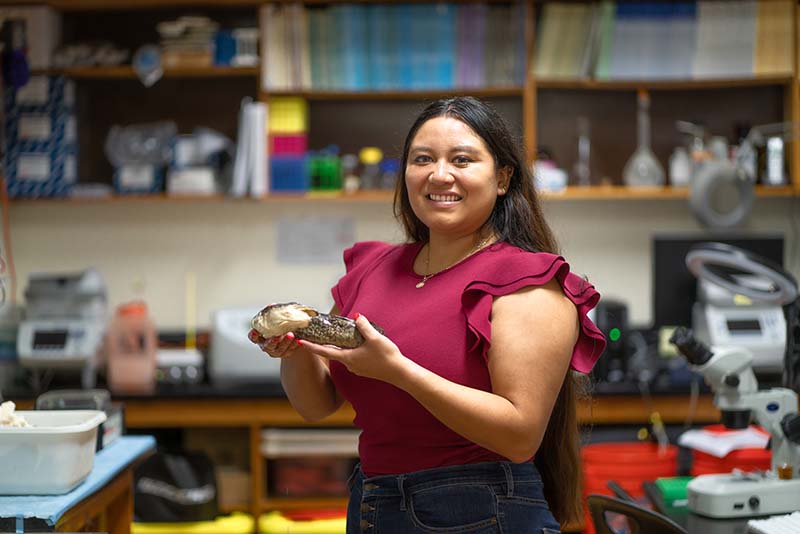
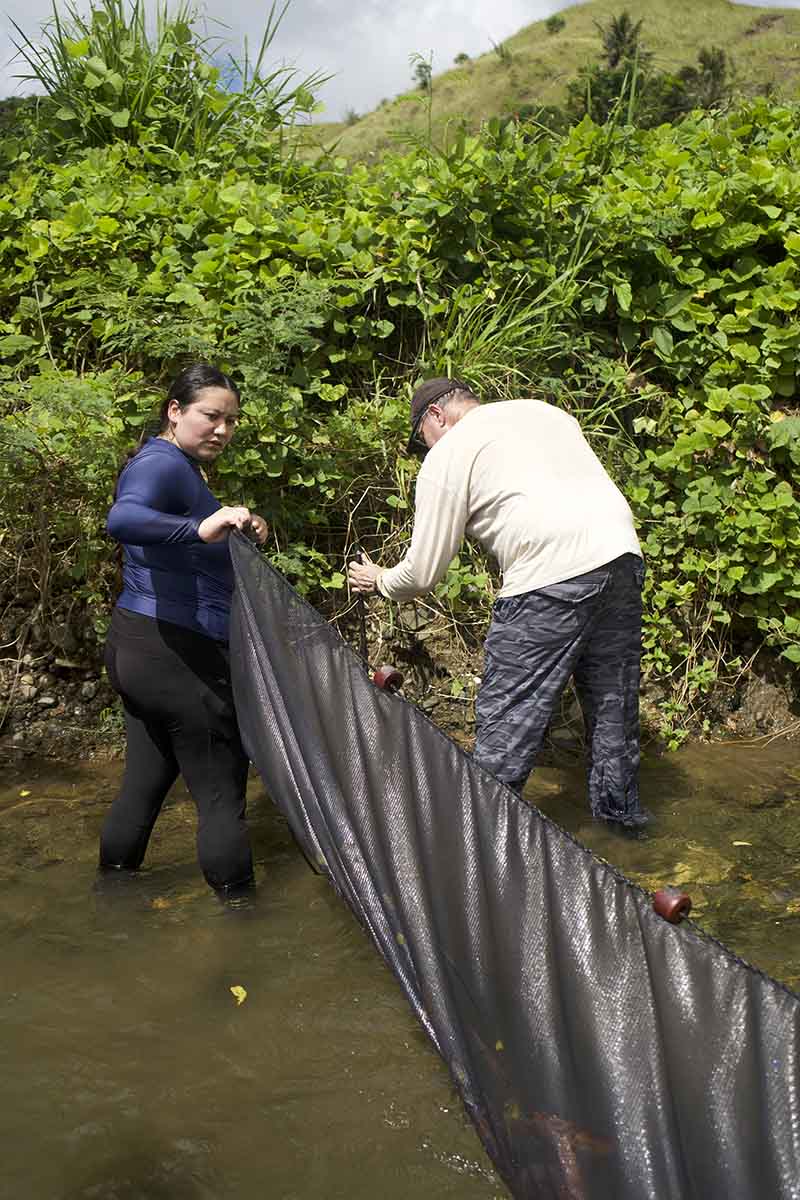
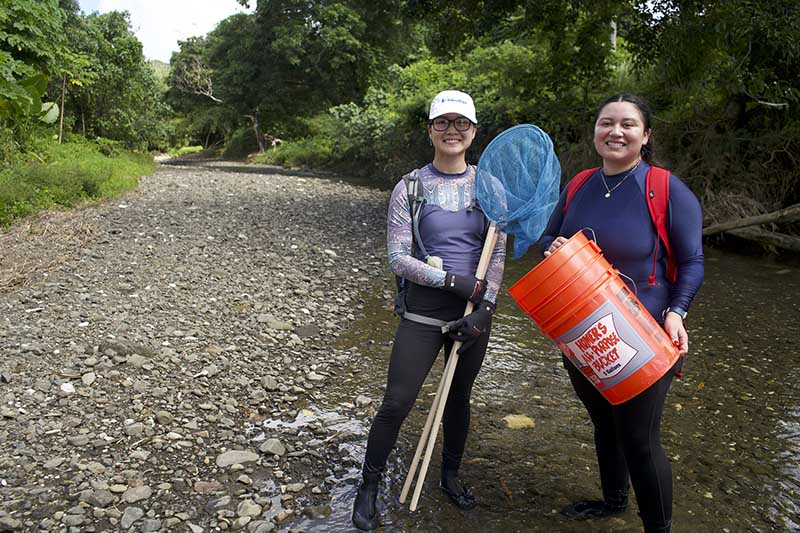
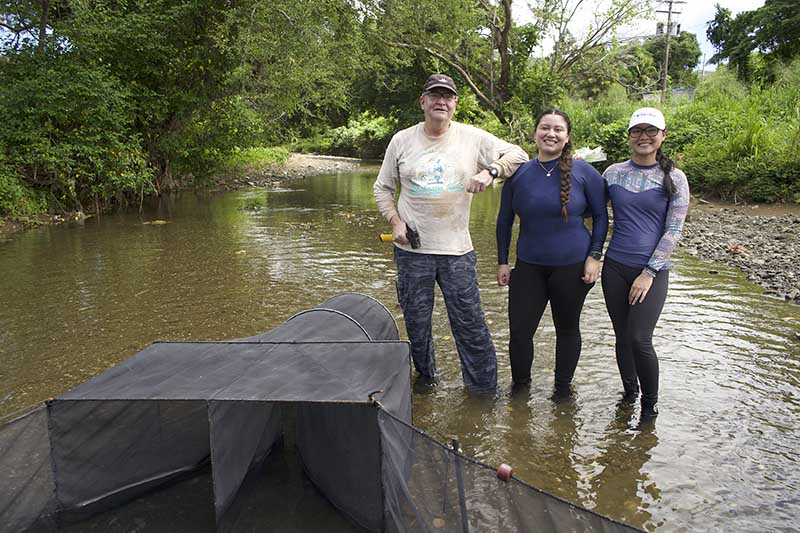
Karina Mejia, a graduate biology student at the University of Guam within the National Science Foundation EPSCoR program, and her research mentor, UOG Associate Professor of Biology Daniel Lindstrom, are looking to answer some unknowns about Guam’s most common river eel — the giant mottled eel, or marbled eel (Anguilla marmorata) — and they will be using some innovative techniques and technologies in the process.
Anguilla eels are found widely through the tropics, and their popularity in Japanese, Chinese, South Korean, and Taiwanese cuisine has contributed to four of its 16 species becoming endangered. While the species in Guam is not endangered, it could be sustainably managed as a food source, but surprisingly little is known about it.
The knowns and unknowns
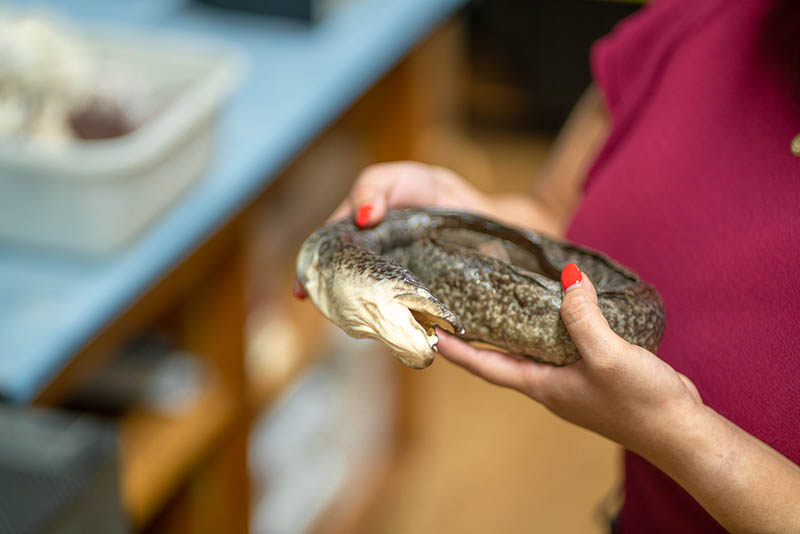
For the A. marmorata, the spawning grounds are not well-defined, and it’s not clear what time of year they journey upstream — both critical pieces of information in order to sustainably fish them in the wild or to raise them in aquaculture facilities.
A deep dive into DNA
Former UOG graduate student Sean Moran discovered that the marbled eels in Guam’s rivers have significant genetic differences. Mejia’s main focus, she said, is to build upon his findings by showing that there are genetic differences because they’re coming from different spawning grounds.
She will do this by performing a high-resolution DNA analysis using a new PCR-based genetic sequencing technology called MIG-seq developed at Tohoku University in Japan. This will allow her to group Guam’s eels with other genetically documented eels in the Indo-Pacific.
Rings that tell a life story
The second analysis Mejia and Lindstrom are hoping to do is a technique known as otolith microchemistry. It is commonly used on species around the world to trace their migration patterns, but it has not yet been conducted on the A. marmorata species in Guam or elsewhere.
The process assesses chemical concentrations within an ear bone, or otolith, of a fish. Much like a tree, otoliths add rings over time, capturing the chemical elements of their environment. The elements found can be compared to the chemical signature of different parts of the ocean, providing a daily timeline of the fish’s migration.
“So we’ll be able to say, ‘OK, this eel floated around in the ocean this many days,’ and if we’re lucky, we can say, ‘This is where it was on Day 27 — this is really close to where it was spawned,’” Lindstrom said. “We’re hoping it’s possible.”
Information for conservation
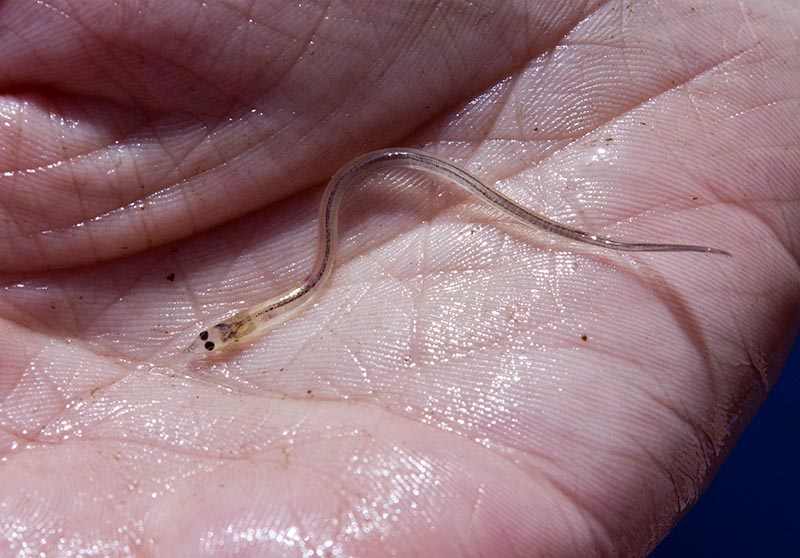
“If we’re able to say, ‘You’re only allowed to catch this amount,’ we can keep the population going and keep them from becoming endangered and then extinct,” she said.
Lindstrom said their findings will also be applicable to aquaculture. No one has been able to spawn and rear these or related eels completely in captivity, he said, so eel farms rely on the collection and captive growing of juvenile eels, or glass eels, as they swim into rivers. By knowing the locations and timing of spawning, those places could be better protected, and wild-caught fisheries could be more sustainably managed.
On the lookout for glass eels
Mejia will be looking for glass eels at Guam’s river openings and encourages the public to let her know (mejiak@gotritons.uog.edu) when and where they may have seen them.
She hopes to have enough data by next fall to draw conclusions and complete her thesis paper by Spring 2024.
